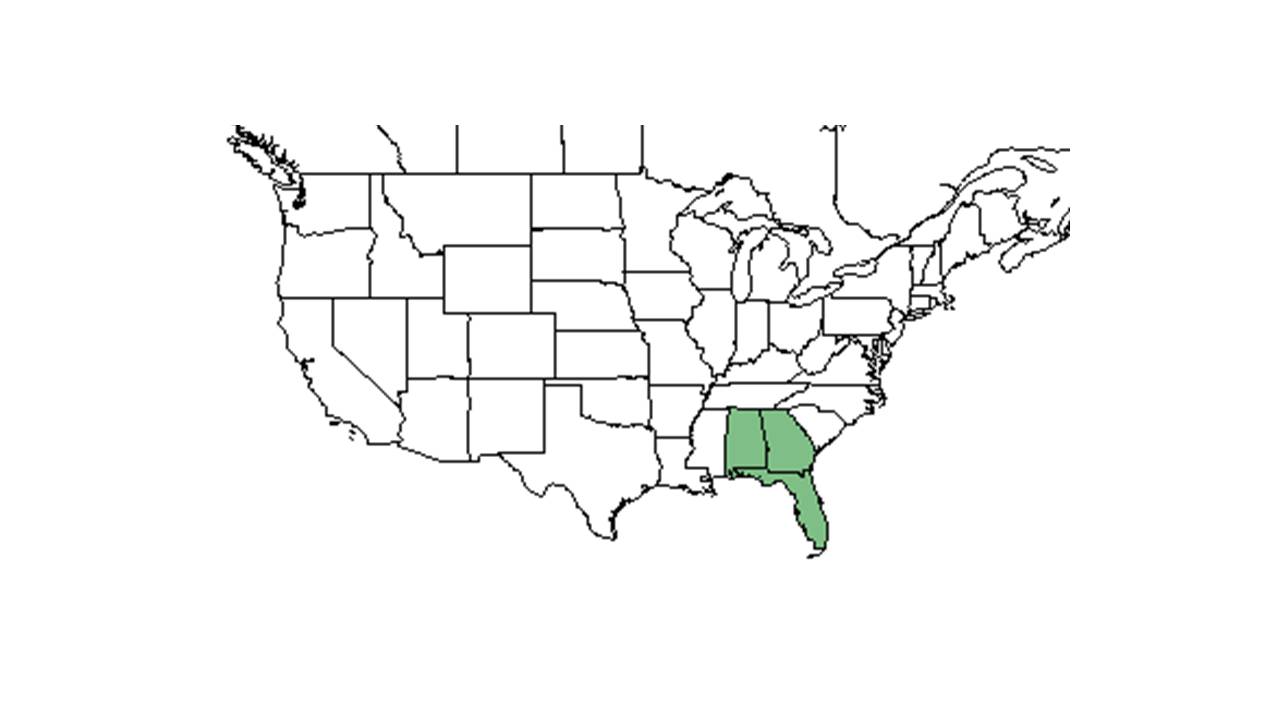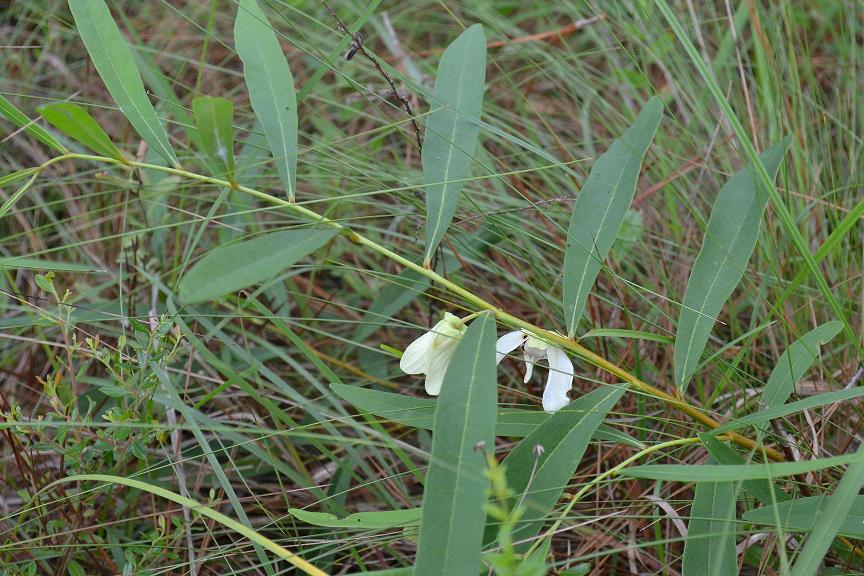Difference between revisions of "Asimina angustifolia"
| Line 23: | Line 23: | ||
===Habitat=== <!--Natural communities, human disturbed habitats, topography, hydrology, soils, light, fire regime requirements for removal of competition, etc.--> | ===Habitat=== <!--Natural communities, human disturbed habitats, topography, hydrology, soils, light, fire regime requirements for removal of competition, etc.--> | ||
Growing in what was previously upland sandhill longleaf pine- wiregrass ecosystem. <ref name="Heuberger et al 2003">Heuberger, K. A. and F. E. Putz (2003). "Fire in the suburbs: ecological impacts of prescribed fire in small remnants of longleaf pine (Pinus palustris) sandhill." Restoration Ecology 11: 72-81.</ref> In Heuberger’s study, they observed Asiminia in burned and in unburned patches. | Growing in what was previously upland sandhill longleaf pine- wiregrass ecosystem. <ref name="Heuberger et al 2003">Heuberger, K. A. and F. E. Putz (2003). "Fire in the suburbs: ecological impacts of prescribed fire in small remnants of longleaf pine (Pinus palustris) sandhill." Restoration Ecology 11: 72-81.</ref> In Heuberger’s study, they observed Asiminia in burned and in unburned patches. | ||
| − | Frequently burned longleaf pine-wiregrass uplands (Ultisols) and longleaf wiregrass sandhills (Entisols) in north Florida and southern Georgia. | + | Frequently burned longleaf pine-wiregrass uplands (Ultisols) and longleaf wiregrass sandhills (Entisols) in north Florida and southern Georgia. ''Asimina angustifolia'' is predominately in the native groundcover with a statistical affinity in upland pinelands of South Georgia (Ostertag and Robertson 2007). |
| + | |||
===Phenology=== <!--Timing off flowering, fruiting, seed dispersal, and environmental triggers. Cite PanFlora website if appropriate: http://www.gilnelson.com/PanFlora/ --> | ===Phenology=== <!--Timing off flowering, fruiting, seed dispersal, and environmental triggers. Cite PanFlora website if appropriate: http://www.gilnelson.com/PanFlora/ --> | ||
===Seed dispersal=== | ===Seed dispersal=== | ||
Revision as of 15:08, 30 June 2015
| Asimina angustifolia | |
|---|---|

| |
| photo by Gil Nelson | |
| Scientific classification | |
| Kingdom: | Plantae |
| Division: | Magnoliophyta - Flowering plants |
| Class: | Magnoliopsida - Dicotyledons |
| Order: | Magnoliales |
| Family: | Annonaceae |
| Genus: | Asimina |
| Species: | A. angustifolia |
| Binomial name | |
| Asimina angustifolia Raf. | |

| |
| Natural range of Asimina angustifolia from USDA NRCS Plants Database. | |
Contents
Description
Distribution
Ecology
Habitat
Growing in what was previously upland sandhill longleaf pine- wiregrass ecosystem. [1] In Heuberger’s study, they observed Asiminia in burned and in unburned patches. Frequently burned longleaf pine-wiregrass uplands (Ultisols) and longleaf wiregrass sandhills (Entisols) in north Florida and southern Georgia. Asimina angustifolia is predominately in the native groundcover with a statistical affinity in upland pinelands of South Georgia (Ostertag and Robertson 2007).
Phenology
Seed dispersal
Seed bank and germination
Fire ecology
Resprouts and flowers within two months of burning. KMR
Pollination
Use by animals
Diseases and parasites
Conservation and Management
Requires frequent fire and protection from soil disturbance.
Cultivation and restoration
Photo Gallery
References and notes
- ↑ Heuberger, K. A. and F. E. Putz (2003). "Fire in the suburbs: ecological impacts of prescribed fire in small remnants of longleaf pine (Pinus palustris) sandhill." Restoration Ecology 11: 72-81.
